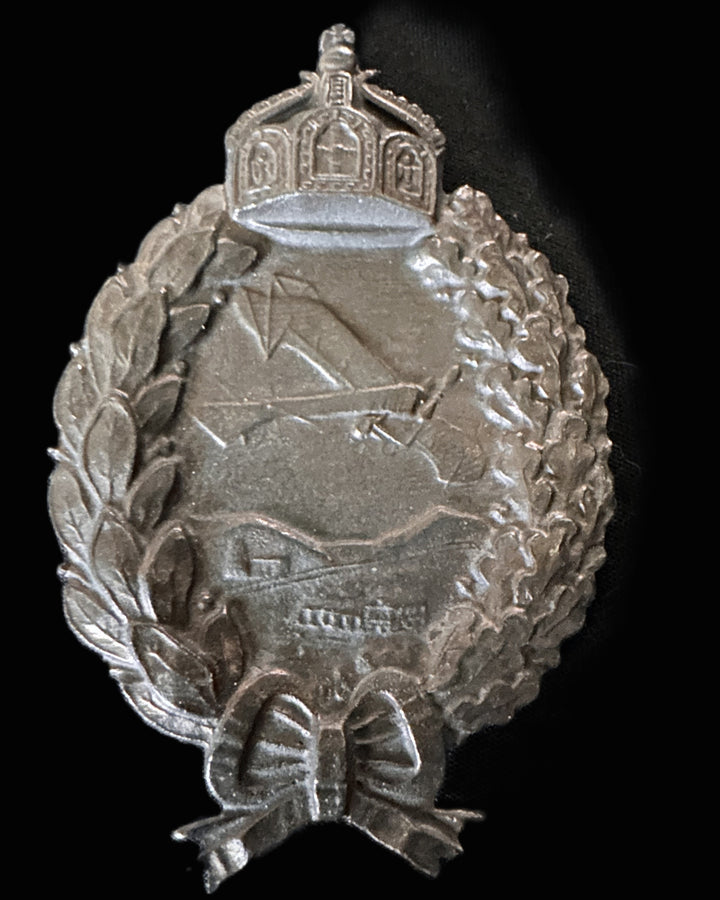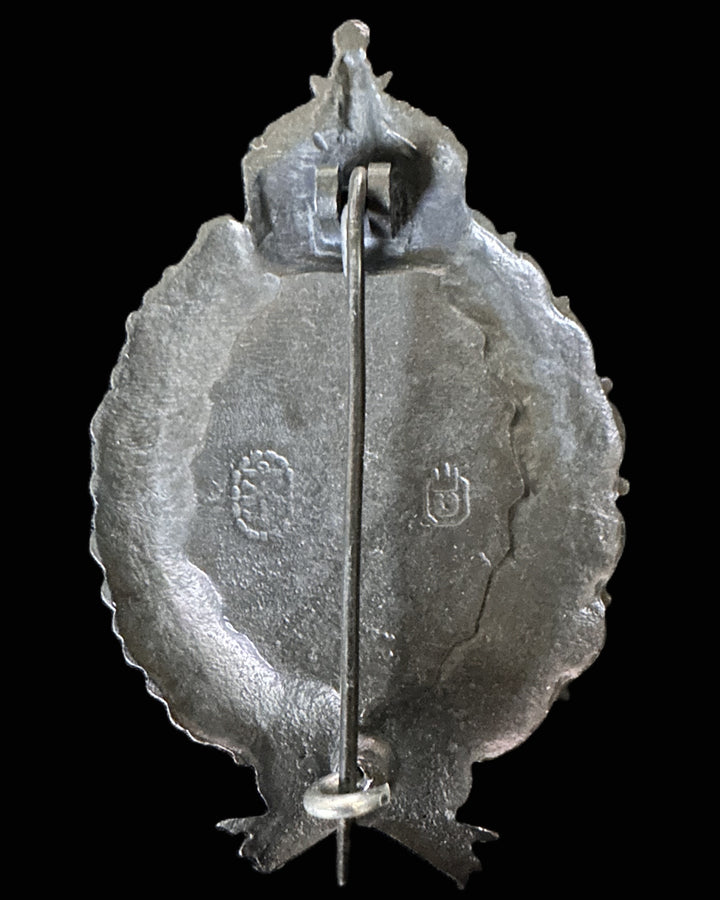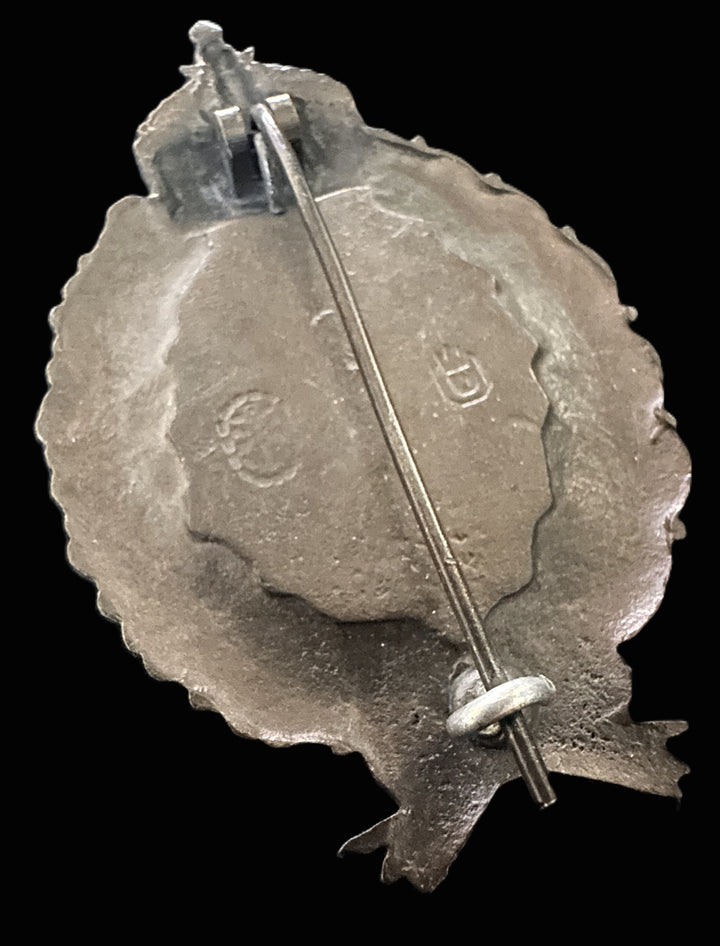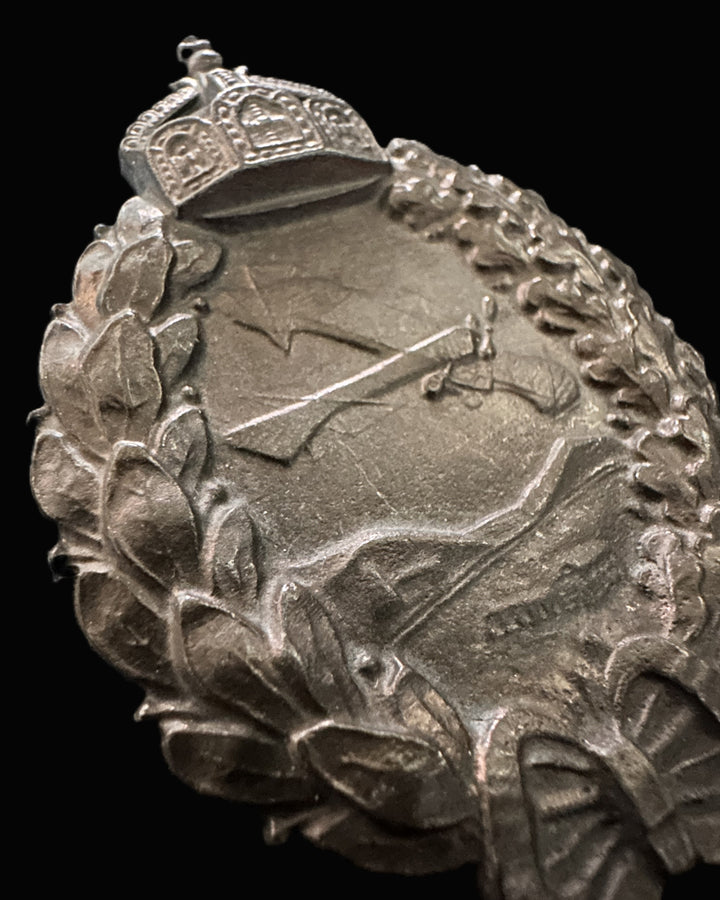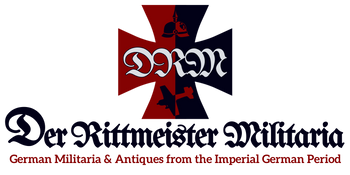Austro-Hungarian Pilot’s Commemorative Badge – World War I, Silver
- Regular price
- $995.00
- Sale price
- $995.00
- Regular price
SKU: 01-20
This silver-toned aviation badge is a fine example of the Austro-Hungarian Empire’s early military aeronautical awards, featuring an imperial crown above a delicately detailed scene of a biplane in flight over mountainous terrain, framed by a laurel and oak wreath tied with a bow. The reverse bears dual hallmark impressions, typical of Vienna silverwork from the Great War period, confirming its authenticity and quality of manufacture.
Instituted in 1913, the Austro-Hungarian pilot badge (Fliegerabzeichen) was among the earliest formal aviation distinctions in Europe, awarded to pilots and observers serving in the k.u.k. Luftfahrtruppen. During the First World War, these airmen fought primarily on the Italian and Eastern Fronts, operating under exceptionally dangerous and pioneering conditions. Only a limited number were issued—estimated under 3,000 for pilots and fewer still for observers—making originals highly desirable among collectors.
The detailed crown of St. Stephen symbolizes imperial authority, while the laurel and oak wreath conveys triumph and steadfastness. The aircraft in relief captures the fragile beauty of early aviation, when wooden biplanes defined modern warfare’s new frontier.
This particular specimen remains in very good condition, showing light age patina and minor handling wear consistent with genuine field-period examples. Its pin and catch remain intact and functional, with well-preserved reverse hallmarks. A superb addition to any Imperial aviation collection, representing both the artistry and valor of the early air service.
The reverse bears dual hallmark punches consistent with Vienna’s 1867-1922 silver assay system—letter ‘A’ for the Viennese office and a registered maker mark (e.g., ‘FR’ rhombus of Rothe & Neffe)—confirming genuine early-war manufacture.
Silver standard is indicated by a number adjacent to the Diana’s-head mark (‘3’ for 800/1000), in line with Austro-Hungarian practice of 1914-18.
